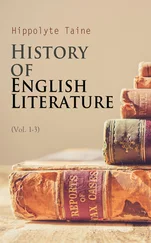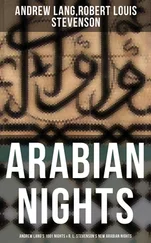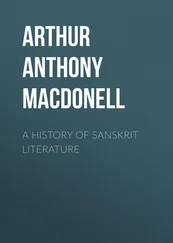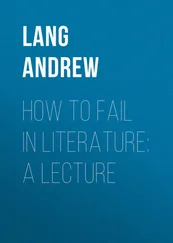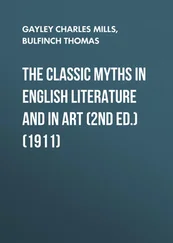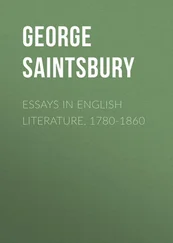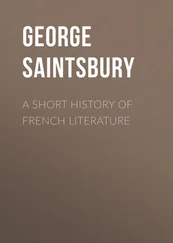There were the new topics, "the matter of Britain," the Celtic legends of Arthur, whether derived from Wales or from Brittany—matter most romantic, and suited to the coming poets who, unlike the Anglo-Saxons, were to glorify love. There was, too, the constant excitement and variety that came from travel, whether in the Crusades, in pilgrimages, or to France and Rome on public or private business, or in search of books and teachers. In various ways knowledge of Saracen science and learning, translations of Aristotle from the Arabic into the Latin, and romantic ideas derived from the fables and tales of far-off India, filtered into England.
These things were for priests and book-loving lords and courtiers. Their wits were sharpened by knowledge of several tongues. All educated men knew Latin; "all men of this land," said Robert of Gloucester (about 1270) "who are of Norman blood, hold to French, and low men hold to English," but high men of English blood would talk in English to their farmers and servants. All who learned Latin learned it through French books, but country priests would preach in English.
The Anglo-Saxon language and grammar were slowly changing, though very few new words from French or Latin had yet come into common use. Cow, sheep, calf, and swine were Anglo-Saxon words, as Gurth the swineherd says in "Ivanhoe". Englishmen herded the animals, but the meat of them was called by French names derived from Latin, like beef, mutton, veal, and pork. From the Conquest (1066) to 1200, learning, Latin, and knowledge of French books would filter slowly into the native English mind, partly through sermons; and rich Franklins, and Englishmen in the service of the conquering race, and English priests would be Anglicizing French words.
CHAPTER V.
GEOFFREY OF MONMOUTH.
Table of Contents
Of all these Latin chroniclers by far the most important was Geoffrey of Monmouth, Bishop of St. Asaph, who finished his "History of the Britons" about 1147. Geoffrey, as has been said, is not a real historian, but something much more interesting. He introduced to the world the story of King Arthur, which at once became the source and centre of hundreds of French romances, in verse or prose, and of poetry down to Tennyson and William Morris. To Geoffrey, or to later English chroniclers who had read Geoffrey, Shakespeare owed the stories of his plays, "Cymbeline" and "King Lear". Though Geoffrey did not write in English but in Latin, he is one of the chief influences in the literature, not only of England, but of Europe, mediaeval and modern.
All readers of the "Morte d'Arthur" of Sir Thomas Malory (about 1470), and the "Idylls of the King," and William Morris's short poems about Arthur and Guinevere, are naturally curious to know if ever there were a real fighting Arthur, and to trace the sources of the countless French and English romances about him and his Court. Where did Geoffrey of Monmouth get his information about this island, from the days of the fabulous Roman who settled it (Brut, or Brutus), to King Arthur's time? We must look at what is known or reported about Arthur.
Bede, the historian, writing about 700-730, says nothing about Arthur , but he does speak briefly about the period (500-516) in which Arthur, if there were such a prince, must have existed. Bede takes from the Welsh writer in Latin, Gildas (about 550) the fact that, up to the date of the siege of Badon Hill (516), forty-four years after the Anglo-Saxons came into Britain, "the British (Welsh) had considerable successes under Ambrosius Aurelianus," perhaps the last of the Romans. " But more of this later ," says Bede, who never returns to the subject. He may have expected to get more information, and that information might have included some account of Arthur, of whom Gildas makes no mention. Bede says nothing of the fable of Brut, which may not have been invented in his time, or, if known to him, was regarded by him as fabulous. Next we have a book attributed to the Welsh Nennius, a "History of the Britons," which is really a patchwork of several older records, and there is the "Annales Cambriæ," annals of Wales. Nennius (about 800?) makes Arthur ("the war-leader" not the king ) win twelve great battles, ending with Badon Hill.
The names of the battles are given, the first is on the river Glein. Now one Glein is in Northumberland, the other in Ayrshire. Four battles are "on the Douglas water in the country called Linnuis"; if "Linnuis" is the Lennox, there are two Douglas waters there, which fall into Loch Lomond, between them is Ben Arthur. The sixth battle was "by the river Bassas," a "Bass" being a hill shaped like an artificial mound, for example the isle called "the Bass" in the Firth of Forth. There are two Basses on the river Carron, in Stirlingshire, and here may have been the sixth battle. The seventh was "Cat Coit Celidon," "the battle ( cat ) of the wood of Celyddon," that is Ettrick Forest, perhaps the fight was on the upper Tweed. The eighth battle is thought to have been waged at Wedale, in the strath of Gala water, a tributary of Tweed, which it reaches at Galashiels; the ninth at Dumbarton, which means "the castle of the Britons"; the tenth near Stirling, where a very late writer says that Arthur kept the Round Table; the eleventh at "Agned Hill"; that is Mynyd Agned—Edinburgh Castle rock; and the twelfth was "the siege of Badon Hill," perhaps a hill on the Avon, near Linlithgow, which has remains of strong fortifications, and is called "the Buden Hill," or "Bouden Hill". (It is not easy, however, to see how the a in Badon became the u in Buden.) Finally the great battle of Camlon, where Arthur fell, is taken to be at a place long called Camelon on the Carron, in Stirlingshire, where Arthur met Saxons, Picts, and Scots, under Medraut, (Modred), son of Llew, or Lothus, to whom Arthur had granted Lothian. On the other side of the river was an ancient building called, as far back as 1293, "Arthur's Oven"; it was destroyed by a laird at the end of the eighteenth century.
If all these conclusions, drawn by Mr. Skene from legends, Nennius, and place-names, be correct, Arthur was a real war-leader, fighting for the Britons, that is the Welsh of Strathclyde, whose country stretched from Dumbarton down through Cumberland. Even Geoffrey of Monmouth makes Arthur fight between Loch Lomond and Edinburgh, and give Lothian to King Lot, that is Llew, whose son, Medraut (Modred), turns traitor to Arthur. Bede places the battles at a time when the Picts had made an alliance with the Saxons, and these two peoples were in contact with each other not down in Cornwall, where later writers place "the last battle in the west," but exactly where Arthur seems to have fought, in the fighting place of Edward I and the Scots—from Carlisle to Dumbarton and Falkirk, and in Ettrick Forest and round Edinburgh, a region where several hills bear Arthur's name.
We need not, then, give up Arthur as a fabulous being, though legends far older than himself came to be told about him. In the oldest Welsh poems that survive he is mentioned among scores of other old heroes, now forgotten, and is always named as a great war-leader, "Emperor and conductor of the toil".
One mention is important. In a long Welsh poem on the graves of many heroes now forgotten, we read:—
The grave of March, the grave of Gwythar,
The grave of Gwgwan Gleddyvrudd,
A mystery to the world , the grave of Arthur. ( Or "not wise to ask where is the grave of Arthur.")
Thus it appears that, even in very early Welsh poetry, the Grave of Arthur (like that of James IV, slain at Flodden), was unknown; hence he was believed, like King James, not to be dead; he was in "the island valley of Avilion," and would come again to help his people, when he was healed of his grievous wound.
Читать дальше



